In contemporary dentistry, different dental splint types are fundamental during controlling different dental concerns, from tooth clenching and grinding to jaw malocclusion, in addition to periodontal difficulties. They each have their function, providing benefits based on the patient’s condition. The use of the right splint, dental splint for loose teeth, one for TMJ dysfunction, or a directive splint to reposition the jaw, can go a long way in providing comfort to the user and helping your treatment go a lot better as well. Aidite, as the leading provider of dental material, provides innovative and reliable solutions for diverse types of dental splints for teeth, ensuring that dental professionals have access to premium dental products, helping to improve outcomes for patients worldwide.
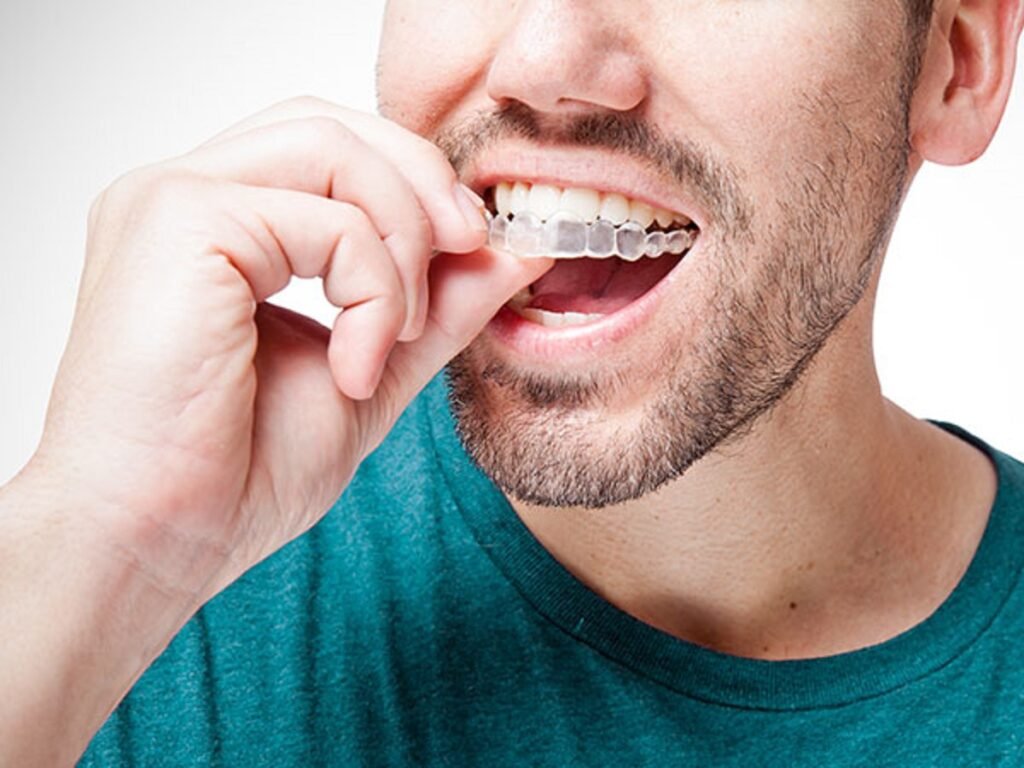
1. Occlusal Splints
One of the most common dental splint types is an occlusal splint. They can also help teeth grinding and TMJ disorder by limiting wear and jaw tension, too. Occlusal splints are recommended by dentists as durable for long-lasting relief treatment and comfortable.
Where it is used:
- Bruxism (teeth grinding)
- Disorders Of The TMJ (Temporomandibular Joint)
- Tooth wear prevention
Pros:
- Minimizes teeth grinding and clenching
- Minimizes enamel wear
- Helps relieve jaw pain
Cons:
- It may feel bulky at first
- Not always a better solution for serious jaw misalignment
2. Stabilization Splints
For TMJ disorders, stabilizing splints provide comfort and support. A TMJ splint provides a custom fit. They serve as a directive splint for jaw repositioning to alleviate muscle strain and reestablish chronic displacement.
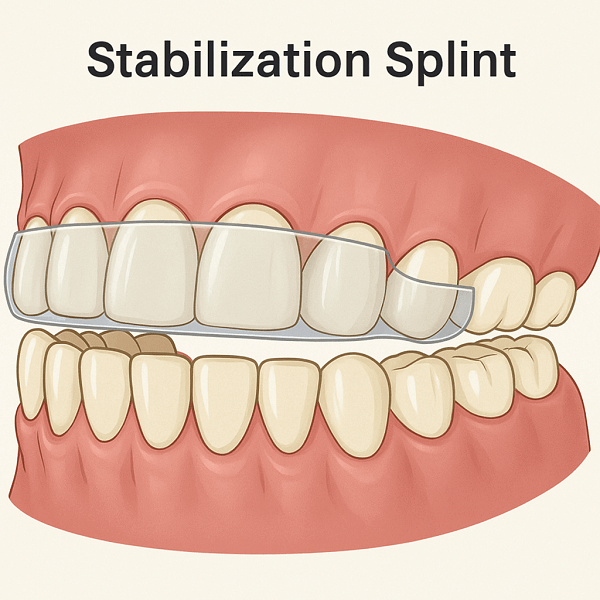
Where it is used:
- TMJ disorders
- Muscle strain relief
- Jaw joint stabilization
Pros:
- Addresses small misalignments of the jaw
- Reduces muscle spasms
- Prevents TMJ degeneration
Cons:
- Needs patient compliance to wear for a prolonged duration
- Need to be adjusted from time to time
3. Repositioning Splinted Jaws in Directions
These types of directive dental splints can reposition the jaw, and this action aids in reducing TMJ pain and enables better bite function. Its clever design ensures that the treatment process is efficient and comfortable.
Where it is used:
- Severe TMJ dysfunction
- Jaw misalignment correction
- Complex bite reconstruction
Pros:
- Gradually repositions the jaw
- Reduces long-term jaw pain
- Prevents further joint damage
Cons:
- Long treatment duration
- There would be some initial discomfort due to the jaw adjusting to this new position
4. Periodontal Splints
Dental splints for loose teeth stabilize and support teeth affected by gum disease. Its precisely designed yet stable structure preserves natural functions.
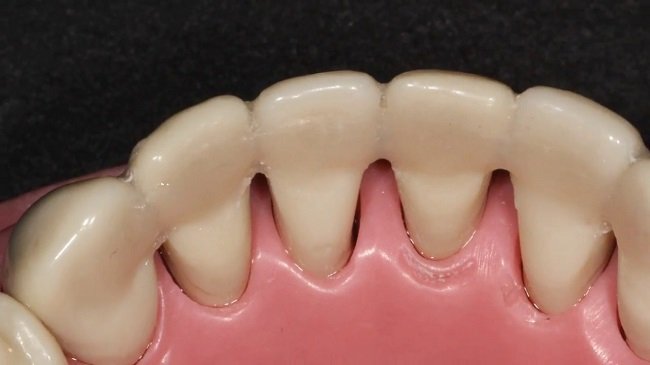
Where it is used:
- Advanced periodontal disease
- Stabilizing wobbly or mobile teeth
Pros:
- Keeps the tooth from moving around and falling out
- Provides instant stabilization
- Conserve the remaining tooth structure
Cons:
- Ignores root cause – gum disease
- Might eventually necessitate gum surgery
5. Emergency Dental Splints
Dental splint types can also be used in emergencies where a tooth has been forced out of its socket or is otherwise loose by stabilizing it and preventing additional injury to the dental structures involved.
Where it is used:
- Dental trauma
- Tooth avulsion or dislocation
Pros:
- Speedy fixation following trauma
- Supports the healing process
- Minimizes the risk of long-term complications
Cons:
- Temporary solution
- Often in need of follow-up therapy
6. Wire and Composite Splints
Dental splints for loose teeth, such as wire and composite splints, utilize a thin wire that is bonded with composite resin and provides a discreet stabilization method, developed for long-term stabilization due to its hard-to-replace nature.
Where it is used:
- Stabilizing loose front teeth
- Post-trauma recovery
- Periodontal stabilization
Pros:
- Minimally invasive
- Aesthetic (nearly invisible)
- Durable
Cons:
- Can trap plaque if not properly cleaned
- You may need occasional rebonding
7. Soft Night Guards
Soft night guards are designed for comfort, protecting those who grind their teeth lightly and occasionally clench their teeth. They also preserve their material structure during everyday use, minimizing wear along the jaw and jaw tension, and are comfortable enough to wear all day long. Ideal for people with mild bruxism, made with one of the high-performance materials.
Where it is used:
- Mild teeth grinding
- TMJ relief
- Occasional clenching
Pros:
- Comfortable and flexible
- Easy patient adaptation
- Protects against mild wear
Cons:
- Not for heavy grinders, not durable
- Can wear quicker than hard guards
8. Hard Night Guards
Different types of dental splints for teeth during the most serious of teeth grinding cases, hard night guards are the most effective form of dental splint. These offer an accurate fit, protection, and durability for chronic bruxism thanks to the digital technology applied.
Where it is used:
- Severe bruxism
- TMJ protection
- Tooth wear prevention
Pros:
- Extremely durable
- Precise fit
- Long-lasting protection
Cons:
- Less comfortable initially
- Can feel rigid to new users
9. Full-Arch Splints
The full-arch splints occupy all the teeth of both the upper and lower arches and act as directive splints for jaw repositioning that guide the jaw into its desired position during the clinical findings of both simple and complicated cases. They feature durable and comfortable advanced materials
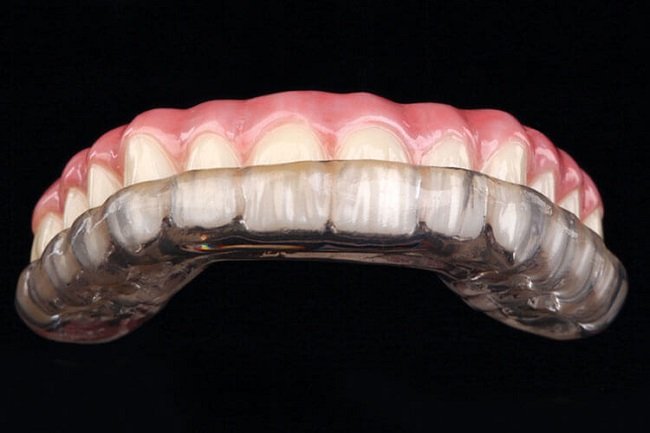
Where it is used:
- Full-mouth rehabilitation
- TMJ repositioning
- Extreme bruxism or bite correction
Pros:
- Comprehensive protection
- Stabilizes the entire dental arch
- Facilitates complicated therapeutic schedules
Cons:
- Far-reaching amendments may be required
- Lower partial, which is more costly than a splint
10. Vacuum-Formed Splints
Three types of dental splints for teeth vacuum-formed, minor stabilization, or post orthodontic splints. They fit very tightly and clearly, ensuring that both functional and appearance aspects are done correctly.
Where it is used:
- Minor stabilization
- Post-orthodontic treatment
- For retention and light protection
Pros:
- Very aesthetic (a lot of extra clear and thin)
- Affordable
- Custom-fit
Cons:
- Not for heavy bruxism; limited lifespan
- Not as effective in discussing big problems
Understanding Dental Splint Cost
The dental splint cost will depend on the dental splint types, materials used, and the complexity of the dental condition. Basic vacuum-formed splints or night guards are usually less expensive, whereas other types of splints, such as directive splints for jaw repositioning or full-arch stabilization splints, often require more costs from their specialization and fabrication.
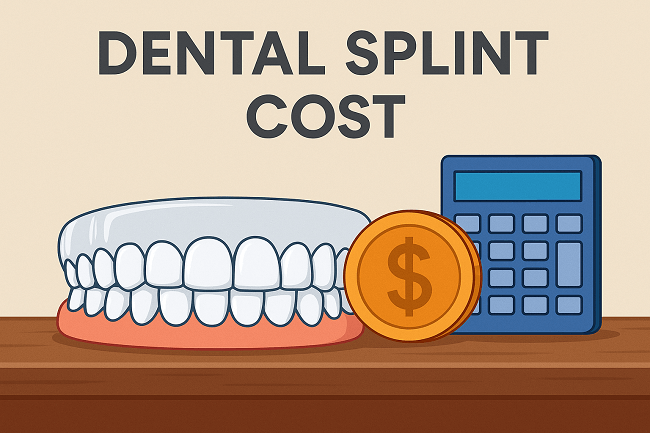
Typically, patients can expect:
- Simple night guards: $200–$500
- Stabilisation splints: $400–$1,000
- Repositioning jaw appliance: $600—$1,500
- Cost for dental splint for mobile teeth: $300–$900
While Aidite does not directly manufacture dental splints, we specialize in supplying advanced dental equipment, materials, and solutions that support dental professionals in delivering high-quality restorative and prosthetic treatments, complementing splint-based therapies.
FAQ
Q1. What is the difference between hard and soft dental splints?
Hard dental splints are durable and ideal for severe grinding but may be uncomfortable for the initial wearing duration, with soft splints being more comfortable to wear, usually for cases of mild grinding that allow easier adaptation for the patient.
Q2. Are loose teeth affecting you, and can dental splints help?
A dental splint for loose teeth stabilizes mobile teeth and prevents further movement during periodontal healing or after dental trauma.
Q3. How many hours should one wear a dental splint?
The different dental splint types selected for specific conditions need to be worn overnight or for a few hours during the day, as advised by the dentist, for maximum effect.
Conclusion
Choosing the right dental splint types plays a crucial role in modern dental treatments; the success of modern dental treatment has a lot to do with dental splint types. Whether functioning to stabilize a dental splint for loose teeth or using directive splints for jaw repositioning to correct severe bite issues, each type of dental splint is used for specific purposes. Knowing the characteristics of dental splints for loose teeth, in turn, helps both the dentist and the patient to choose the most appropriate therapy for them. There are many available, but you can get better comfort, longevity, and results if you choose quality options. As the vanguard of dental technology, Aidite provides advanced dental materials that are up to the highest standard of care and are suitable for the leading dentists around the globe.



